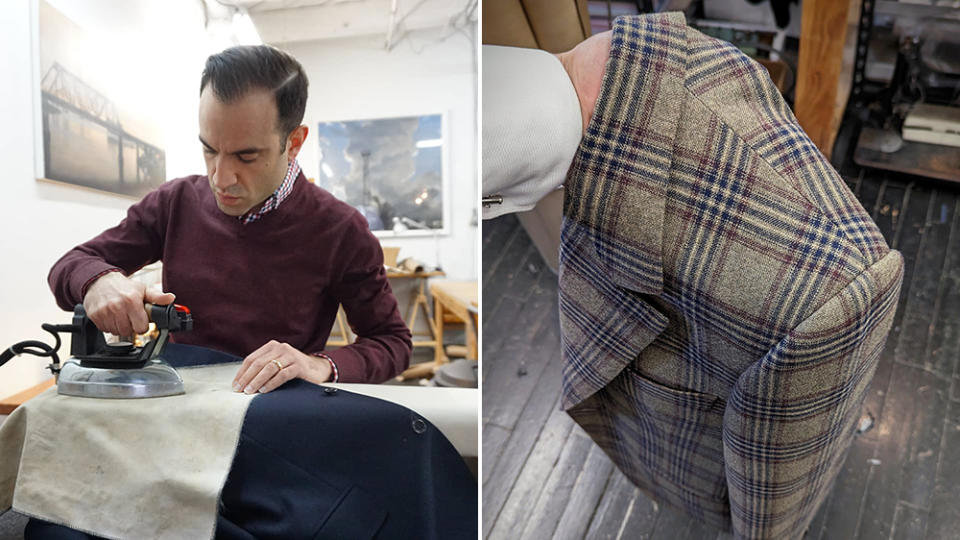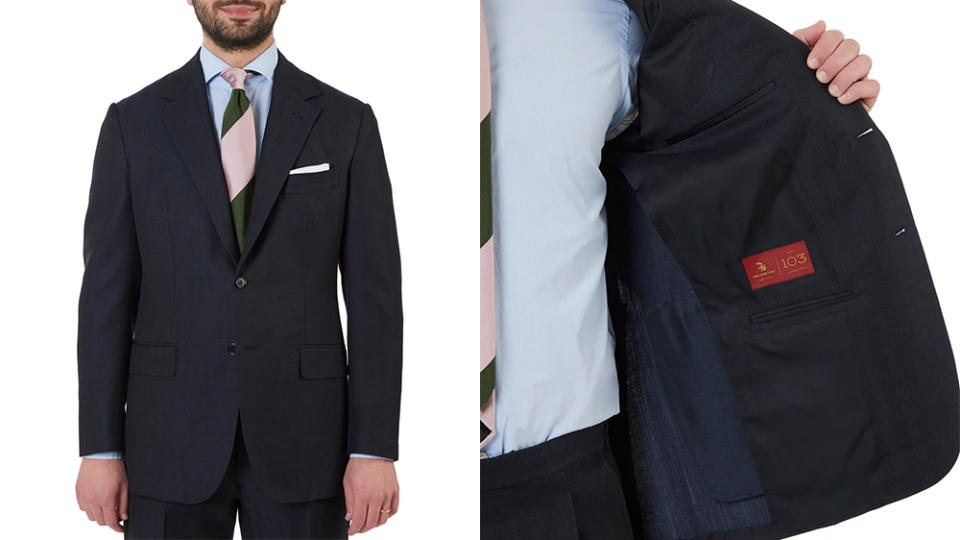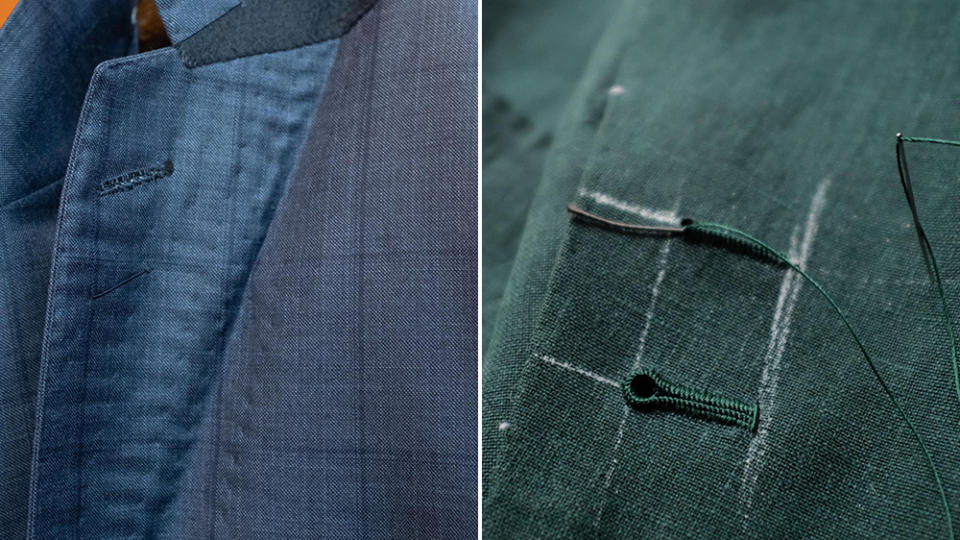Are Handmade Suits Always Better? We Asked Custom Tailors to Weigh In.

Within the insular world of high-end tailoring, the concept of “handwork” appears time and again. Whether it’s in reference to a bespoke suit sewn by a single tailor’s fingertips or an off-the-rack jacket touched by human hands at critical junctures, it carries a clear cachet. Which made us wonder: aside from the romance of the tailor at his bench, what benefits accrue from tailoring by hand in an industrial age?
For Hoboken-based bespoke tailor Joseph Genuardi, the keyword is “variability.” He acknowledges that machine-making allows for “consistency and precision at scale while decreasing labor costs,” but that “Human minds and experienced hands are much better at processing this variability in a nuanced way, and more nimble in recalibrating from job to job.”
More from Robb Report
Ferrari's Dazzling One-of-a-Kind KC23 Is Designed to Dominate the Track
Meet the Quailors, the LGBTQ+ Tailors Bringing Pride to London's Savile Row
Genuardi—whose definition of handwork encompasses hand-sewing with needle and thread, as well as hand-pressing with irons—uses the example of adding volume to a shoulder blade to complement a body’s shape or softening a shoulder line per client request. “It’s about optimizing design control and efficiency for design variation,” he tells Robb Report.

Through hand-sewing and hand-pressing, Genuardi says tailors can give garments a sculpted, three-dimensional look. In addition, the extra tension built into hand-sewn garments allows them to sit more comfortably against the body and better retain their shape with wear.
“The apex of beauty in tailored clothing can only be reached with hand-sewing and hand-pressing,” he continues.
Beautiful as its cumulative results may be, the tell-tale signs of handwork are typically hidden from the naked eye, sandwiched between the garment’s outside cloth and inside lining. While exterior details like handsewn buttonholes and topstitching were once signs of a handmade garment, their increasing prevalence in largely machine-made tailoring has made them a less reliable indicator.
As an alternative test, Genuardi suggests picking up a jacket, reaching into its shoulder with an extended hand, and allowing it to hang in place. “If you look down from above the jacket, you will see that a handmade garment literally hangs three-dimensionally in space, as if the air were filling the volumes built into the garment. There are very few surfaces of the jacket that are flat.”
It should come as no surprise that a bespoke, fully handmade garment such as those produced by Genuardi and his team are priced at a premium. But aside from the outlay in cash, the multiple fittings they require demand an even more precious resource—time.

Fortunately, those pressed for time (or patience) can find varying levels of handwork off the rack. One of the most complete examples comes courtesy of The Armoury, whose recently introduced Model 103 range of suits and jackets are almost completely handmade.
“Not everyone needs nor has time to have really beautiful bespoke made for them,” says Armoury co-founder Mark Cho. “We hope this can be a good alternative for some of our customers.”
The 103 differs from a completely handmade garment in its long seams, such as the joining of large fabric panels, which Cho says have been machine-sewn for durability. “Parts with a lot of curvature benefit the most when done by hand, which includes the collar and the shoulders, where the shape is very complex,” he says. “It allows for a neater result, and these areas will fit on the body better.”
Other operators, such as Alan Flusser Custom, have merged handwork and machine-making to harness the advantages of both. Its standard made-to-measure offering includes a hand-set collar and sleeve lining, hand-finishing on the outside of the lapels and pockets, and hand-sewn buttonholes. The business also offers a higher-level MTM product with a greater amount of handwork, including hand-padded lapels.

As for the benefits of handwork generally, owner Jonathan Sigmon takes a utilitarian view. “It somewhat depends on where the handwork is done. There isn’t much purely functional value to hand-sewing on trousers,” he tells Robb Report.
“On a jacket, one could argue that the shaping you can achieve by setting the collar and sleeves by hand can improve the fit, and hand-padding the chest and lapel can improve the drape, the roll, and the expression of the lapel,” Sigmon continues. “These differences are rather limited, however, and largely dependent on the weight of the cloth and canvas.”
Moreover, Sigmon doesn’t think that the machine approach should be automatically counted out, citing the precision and specialization of modern garment-making equipment.
“When working with a good pattern, and using high-quality materials and trimmings, these machines can be used to produce garments so well-made that the vast majority of individuals wouldn’t notice any difference in wear,” he says. “I emphasize to my clients that we offer a higher-level handmade product for the craft and the beauty of it, but they shouldn’t expect it to fit and feel drastically different from our garments that have less handwork throughout.”
While there are clear differences between a garment sewn by hand and one built by machine, it’s likely true that many of those nuances might be lost by the untrained eye. Ultimately, the benefit may lie in how it feels to wear a handmade garment—in both the physical and emotional sense.
“A handmade garment’s improved fit is often worth the extra hassle,” says Cho. “Knowing that skilled hands made your garment is also a pleasure. Attention to detail is essential to all beautiful things.”
Best of Robb Report
Sign up for Robb Report's Newsletter. For the latest news, follow us on Facebook, Twitter, and Instagram.

